Hong Kong Orchid (Bauhinia x blakeana) is a stunning evergreen tree admired worldwide for its vibrant, orchid-like pink flowers. Originating from Hong Kong, this hybrid tree belongs to the Fabaceae family and the Bauhinia genus. Commonly referred to as Blake’s Bauhinia, Camel’s Foot, or Purple Orchid Tree, it thrives in warm climates and is ideal for hardiness zones 9 to 11.
This leguminous perennial is highly valued for its ornamental appeal, making it a popular choice in landscapes and urban gardens. Beyond its beauty, the Hong Kong Orchid has a rich history of use in traditional medicine, known for its potential health benefits.
| Common name | Blake’s bauhinia, Camel’s Foot, Hong Kong Orchid, Hong Kong Orchid Tree, Purple Orchid Tree |
| Botanical name | Bauhinia x blakeana |
| Family | Fabaceae |
| Species | x blakeana |
| Origin | China |
| Life cycle | Woody |
| Plant type | Perennial |
| Hardiness zone | 9, 10, 11 |
| Sunlight | Full Sun |
| Maintenance | Medium |
| Soil condition | Clay |
| Soil ph | Acid |
| Drainage | Well-Drained |
| Growth rate | Fast |
| Spacing | 6 – ft. – 12 ft. |
| Flowering period | Fall |
| Height | 12 ft. – 20 ft. |
| Flower color | Pink |
| Leaf color | Green |
| Stem color | Brown, Copper |
| Fruit type | Legume |
| Leaf benefit | Showy |
| Flower benefit | Fragrant |
| Garden style | Winter Garden |
| Uses | Recreational Play Area |
I. Appearance and Characteristics
Bauhinia × blakeana (bow-HIN-ee-ə [cross] blayk-ee-AH-nə), commonly called the Hong Kong orchid tree, is a hybrid leguminous tree of the genus Bauhinia. It has large thick leaves and striking purplish red flowers. The fragrant, orchid-like flowers are usually 10 to 15 centimetres (3.9 to 5.9 in) across, and bloom from early November to the end of March. Although now cultivated in many areas, it originated in Hong Kong in 1880 and apparently all of the cultivated trees derive from one cultivated at the Hong Kong Botanical Gardens and widely planted in Hong Kong starting in 1914.
It is referred to as bauhinia in non-scientific literature though this is the name of the genus. It is sometimes called the Hong Kong orchid (Chinese: 香港蘭; Cantonese Yale: Hēunggóng làahn). In Hong Kong, it is most commonly referred to by its Chinese name of 洋紫荊 (yèuhng jígīng).
The Bauhinia double-lobed leaf is similar in shape to a heart or a butterfly, or a camel’s footprint – hence the common name camel’s foot. A typical leaf is 7 to 10 centimetres (2.8 to 3.9 in) long and 10 to 13 centimetres (3.9 to 5.1 in) wide, with a deep cleft dividing the apex. In Hong Kong the leaf is known as the “clever leaf” (聰明葉; chūngmìhng yihp), and is regarded as a symbol of wisdom. Some people use the leaves to make bookmarks in the hope that they will bring them good luck in their studies.
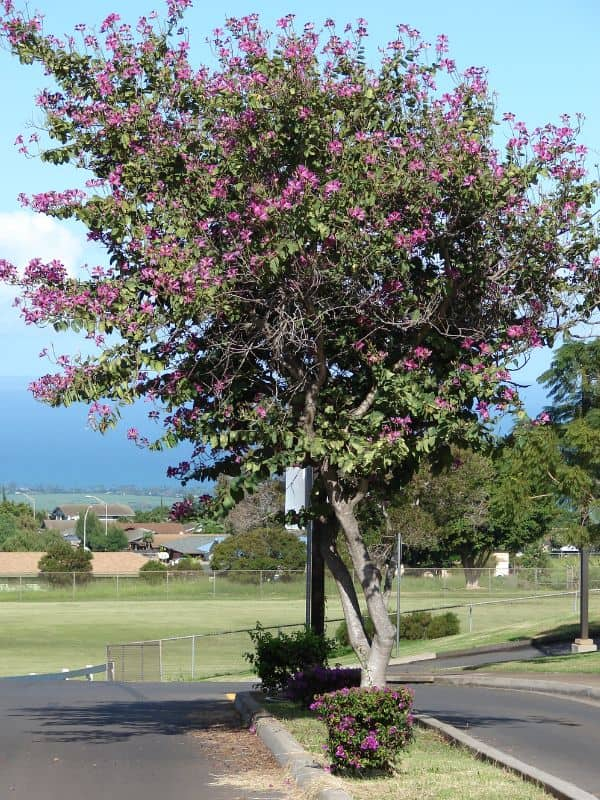
It is sterile, which means it does not generally produce seeds or fruits, and is a hybrid between Bauhinia variegata and Bauhinia purpurea. The 2008 research was able to identify the female parent as Bauhinia purpurea, but it could not differentiate the male parent from Bauhinia variegata var. variegata or Bauhinia variegata var. candida. This is not unexpected, as Bauhinia variegata var. candida is a white-flowered form of Bauhinia variegata var. variegata, and not a separate species or sub-species. The 2005 research suggested Bauhinia × blakeana is genetically closer to Bauhinia variegata, while the 2008 research indicated it is closer to Bauhinia purpurea instead.
II. How to Grow and Care
Sunlight
The Hong Kong orchid tree tolerates a range of light conditions. It will bloom in full sun, partial sun or partial shade.
Temperature and Humidity
This tree is best suited to a tropical or subtropical climate, but will tolerate a light frost and can withstand temperatures down to 22 degrees for short periods in winter. It likes to dry out between waterings so a humid environment is not ideal for this tree.
Watering
Although the Hong Kong orchid tree prefers a moist loamy soil environment, its water needs are low to average. It is very drought tolerant, and overwatering may cause it to bloom less vigorously.
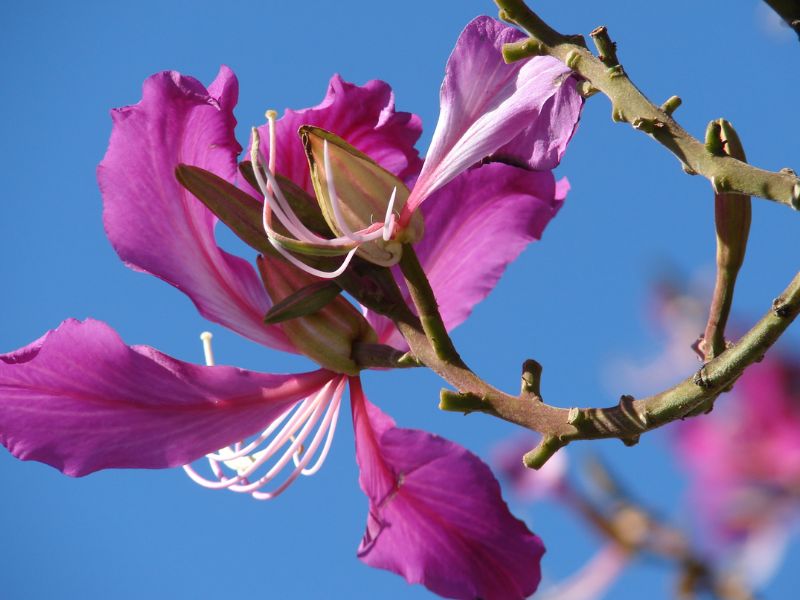
Soil
This tree is best grown in loamy, sandy soil that is slightly acidic. The soil should be moist and well-drained. If planting in clay soils, be sure to add amendments such as compost to create a more crumbly texture.
Fertilizing
The Hong Kong orchid tree benefits from a fertilizer application three times a year, in spring summer and autumn. Use a basic granular organic fertilizer, mixing it in with the top layer of soil, and be sure to check the weather forecast to make sure it’s not going to rain for at least 3 days after you apply it. This will ensure the fertilizer starts to feed the tree and enrich the soil and is not washed away too quickly by rain.
Pruning
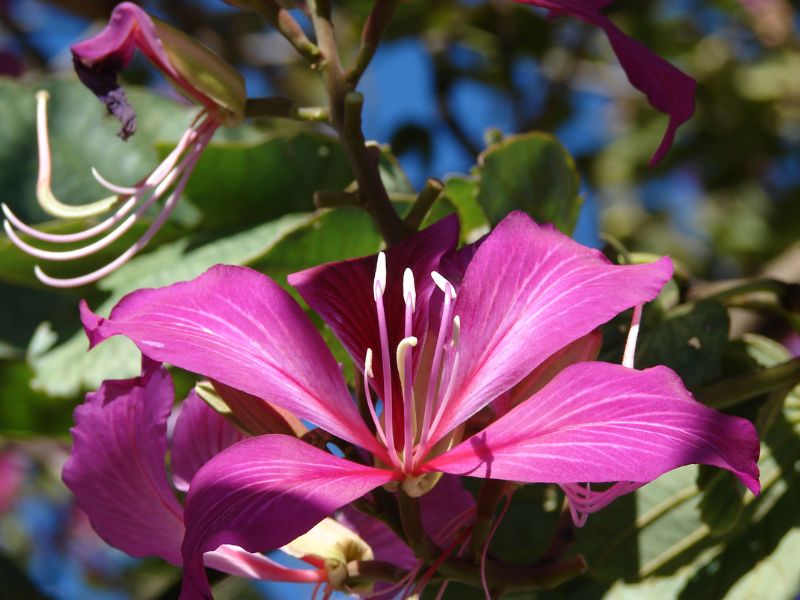
It’s very important to prune Hong Kong orchid trees while they are young, as they may grow somewhat irregularly. Regular pruning will give them a solid structure and create a uniform shape to the crown of the tree. The tree’s upper branches tend to droop a bit as it grows, and will need to be pruned to keep walkways clear.
Propagation
Since this tree is a fruitless sterile hybrid, it doesn’t produce trees from seeds. But you can grow it from cuttings taken in summer and rooted over bottom heat: a method used to induce root growth by keeping the branch end coolant dormant. Branches can also be induced to grow roots by what is called layering: either by burying a section in the ground, or scarring a small section of the branch with a knife and then wrapping it with damp sphagnum moss and enclosing it in a plastic bag. Roots should begin to form within 10-14 days.
How to Get to Bloom
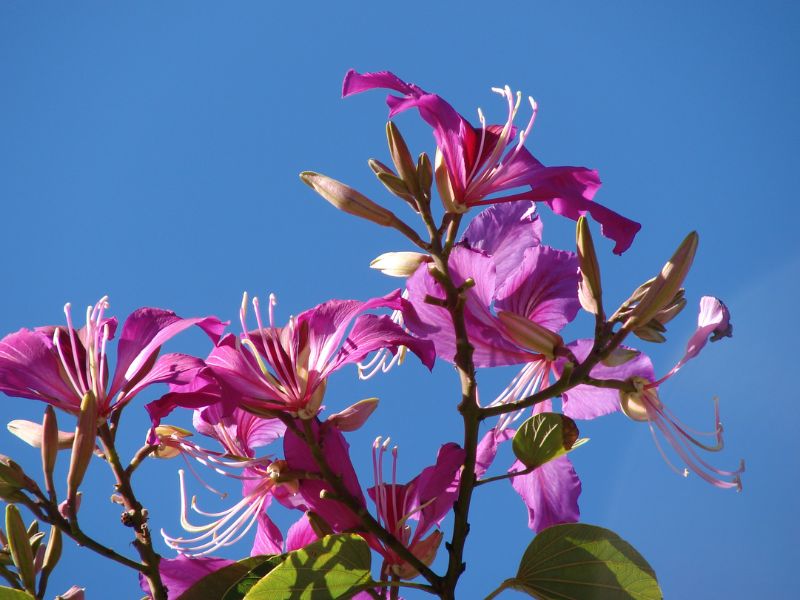
One trick to help promote vigorous blooms on this tree is to avoid overwatering. Letting the soil around the base of the tree dry out between waterings helps to promote more vibrant growth and more flowers.
Pests and Diseases
Common Pests and Plant Diseases
Though generally a very hardy tree, the Hong Kong orchid tree is somewhat vulnerable to pests and diseases. The main pest problems are caterpillars who munch on the leaves, mites who might cause the flowers to wilt, and borers who feed on the soft wood of the trunk and branches. They are also somewhat susceptible to leaf spot and leaf scorch. There may be a tendency for the tree to have nutritional deficiencies such as potassium, which can be fixed with regular use of the appropriate fertilizer.
Common Problems
Because it is so fast growing, the wood of this tree is not very dense or strong, making it susceptible to wind damage or breakage in storms. Planting it in a protected location near a building or similar structure can help prevent weather and wind damage.
III. Uses and Benefits
Here are some of the top health benefits of Bauhinia blakeana that make it a valuable plant for humans:
- Antimicrobial properties
The leaves of Bauhinia blakeana can inhibit bacterial growth. Their antimicrobial activity inhibits the growth of yeast infections in the body. Additionally, it can purge the body of bacteria that can cause many health complications. It can prevent the spread of E.coli and cures the body of bacterial infections.
- Prevents kidney problems
Bauhinia blakeana has ethanolic extracts that are present in its stem. This extract can help lower blood urea and creatinine levels. This ensures the smooth functioning of the kidneys. It can clear the blood of toxins and expel them through the urinary system.
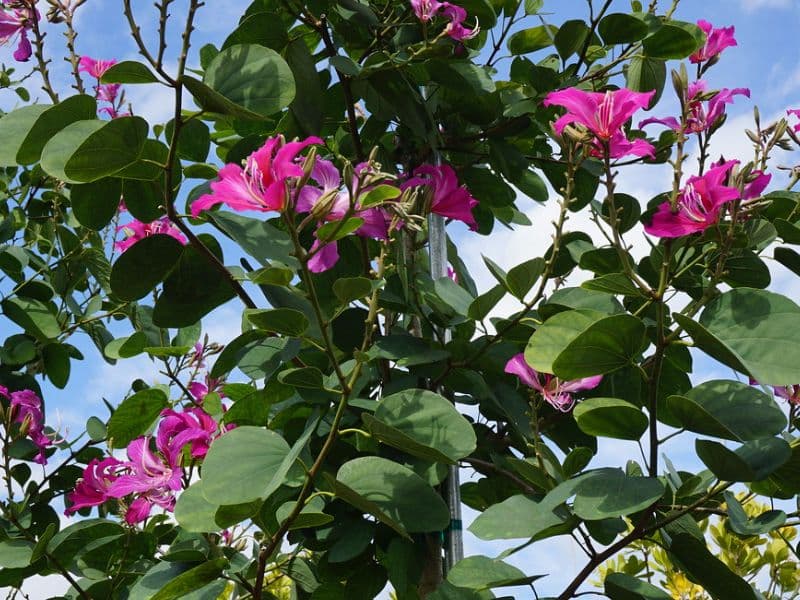
- Prevents cell damage
The leaves of Bauhinia blakeana can have antioxidant properties, as suggested in medical studies. The presence of phytoconstituents can significantly reduce hyperlipidaemia states. The antioxidant abilities of the leaves can prevent cell damage and restore the vitality of the body.
- Anti-inflammatory properties
Kachnar has anti-inflammatory properties that make it a great medicine for reducing swelling. It can provide relief to infected or injured areas. Additionally, it can cure problems like sore throat, arthritis, gum inflammation, and many more. The plant can also provide relief from mild to severe allergic reactions.
- Lowers risk of diabetes
Kachnar or Bauhinia blakeana is found to reduce blood sugar levels. Several studies have shown that the plant is able to balance blood sugar levels. This allows it to lower the risk of diabetes. It can be administered to patients who suffer from high blood sugar levels as well. It helps in insulin production, which very few plants can actually do.
- Improves thyroid levels
Hypothyroidism is a common problem, especially in women. Ayurveda believes that hypothyroidism is caused by the aggravation of three doshas, namely vata, pitta, kapha. Additional factors like obesity and a weak digestive system can also affect thyroid levels. Kachnar or Bauhinia blakeana extracts help restore the three doshas and solve problems of hypothyroidism.
- Cures constipation and haemorrhoids
Kachnar is said to help the stomach produce more digestive juices. According to ancient Ayurveda, these juices help the consumed food to get digested faster and better. This, in turn, makes it easier to get rid of body waste through the excretory system. Additionally, its anti-inflammatory properties help provide relief from haemorrhoids that can be extremely painful and uncomfortable.
Find Where to Buy the Best Hong Kong Orchid Tree (Bauhinia x blakeana)
















Leave a Reply